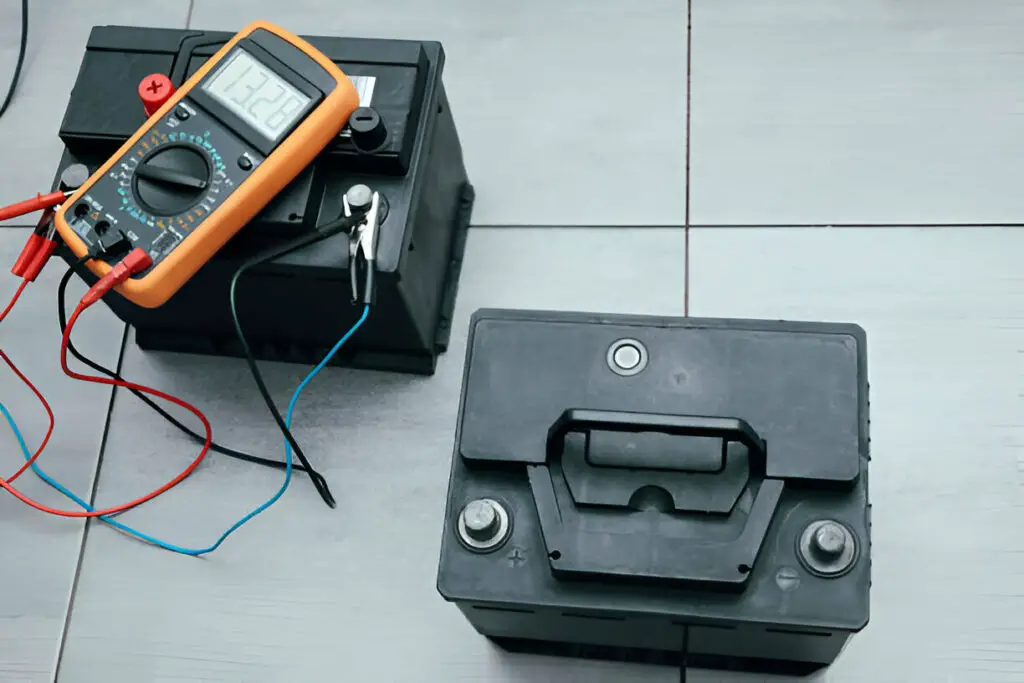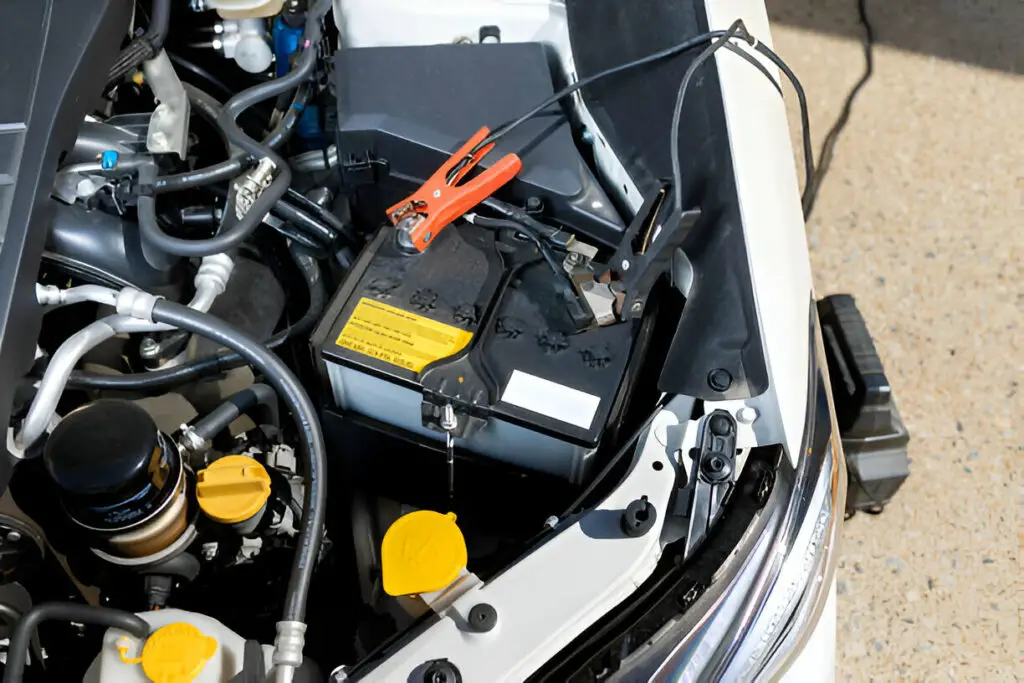Does idling a car charge the battery? Yes, idling a car can charge the battery, but the process is slow and inefficient. The alternator produces less power at idle speeds, meaning it takes a long time to provide a sufficient charge compared to driving at higher speeds.
Does idling a car charge the battery? This is a common question among car owners, especially those looking for ways to maintain their vehicle’s battery without the need for regular driving. While many believe that simply leaving the car running will recharge the battery, the truth is a bit more complicated. In this article, we’ll explore the science behind how a car’s alternator works to charge the battery, the efficiency of charging while idling, and the risks involved. By the end of this guide, you’ll understand whether idling a car truly charges the battery and how you should care for your car’s electrical system.

Contents
How Does Charging a Car Battery Work?
It’s important to understand how the battery in a car gets charged in the first place. The car’s battery is charged by the alternator, which converts mechanical energy from the engine into electrical energy. This energy is used to power the car’s electrical components like the headlights, infotainment system, and, of course, charge the battery.
Role of the Alternator in Charging the Battery
The alternator generates electrical power as the engine runs. The faster the engine runs (higher RPM), the more power the alternator can produce. This power is then sent to the car’s battery, ensuring it stays charged and ready to provide electrical power when needed. However, the rate at which the alternator charges the battery depends on the engine’s speed and load.
Does a Car Battery Charge When Idling?
Idling a car can charge the battery, but the process is much slower compared to driving at higher speeds. In this section, we’ll explore how idling affects battery charging and why it’s not the most efficient method.
Can Idling a Car Charge the Battery?
The simple answer is: yes, idling a car can charge the battery, but it’s not very efficient. When your engine is idling, it’s running at a much lower speed compared to driving. This lower RPM (revolutions per minute) results in a reduced output from the alternator, which in turn leads to a slower charge rate for the battery.
At idle, the alternator doesn’t produce enough power to fully recharge a depleted battery, especially if you have a lot of electrical components running, such as the air conditioning, headlights, or a stereo system. So while idling a car will charge the battery, it will be a very slow and minimal process.
Why Is Idling Inefficient for Charging?
Idling a car may charge the battery, but it’s not an efficient way to do so. The alternator operates at a lower capacity when the engine is idling, which means it produces less power to charge the battery.
- Lower RPM: At idle, the engine runs at a slower speed, which means the alternator produces less electricity.
- Electrical Load: When you use electrical accessories like the air conditioning, infotainment system, or headlights, they draw power from the alternator, reducing the amount of power available to charge the battery.
- Battery Health: If the battery is in poor condition, it may not charge properly, even when the car is idling or running at higher RPMs.
- Alternator Efficiency: Some alternators are designed to operate most efficiently at higher engine speeds, meaning they may not produce adequate power when the car is idling.

How Long Should You Idle to Charge the Battery?
If you’re relying on idling a car to charge the battery, you might wonder, “How long should I idle a car to charge the battery?” The answer depends on a few factors, including the condition of your battery, the alternator’s efficiency, and how much electrical load the car is under.
In general, idling for an hour or more will charge your battery, but the charging will be slow. This is not an efficient or effective way to charge the battery. If your battery is significantly drained, you might need to drive the car for at least 30 minutes at highway speeds to properly recharge it. Driving at higher speeds allows the alternator to work at full capacity, generating more power to charge the battery.
Risks of Charging a Car Battery While Idling
While idling a car to charge the battery may seem like a quick fix, it comes with several risks that you should consider:
1. Engine Wear
Idling for long periods can result in incomplete combustion in the engine. When a car idles, fuel combustion isn’t as efficient, leading to the formation of carbon deposits. Over time, this can affect engine performance and contribute to unnecessary wear and tear.
2. Battery Overheating
Batteries generate heat as they charge. If you idle for an extended period, especially if the car’s cooling system isn’t working properly, the battery can overheat. This can lead to battery damage or a shortened lifespan.
3. Fuel Consumption and Environmental Impact
Idling consumes fuel and increases emissions, both of which are inefficient and environmentally harmful. If you’re trying to maintain the car’s battery, it’s better to drive or use a battery charger designed for this purpose instead of idling.
4. Exhaust Damage
Prolonged idling can cause issues with the exhaust system, especially if the car is older or has existing issues. The exhaust gases produced by idling can lead to the formation of carbon buildup, which may damage the exhaust system or cause it to clog over time.
Best Practices for Charging Your Car Battery
While idling a car does technically charge the battery, there are more effective methods to maintain the health of your car’s battery:
1. Drive the Car
Driving your car at highway speeds for at least 30 minutes is the best way to ensure that the alternator generates sufficient power to charge the battery. This is especially important if the battery is low or has been drained.
2. Use a Battery Maintainer
If you don’t drive your car frequently or only use it for short trips, a battery maintainer is a great investment. This device ensures that the battery stays charged without the risk of overcharging.
3. Turn Off Unnecessary Accessories
When idling, turning off accessories like the air conditioning, headlights, or the stereo can reduce the load on the alternator, allowing more power to go into charging the battery.
4. Check Battery Health
Make sure your battery is in good condition. An old or damaged battery may not charge effectively, even when the engine is running. If your battery is old, it’s best to replace it before it fails.
Conclusion
While idling a car to charge the battery might provide a small charge, it’s not the most effective method. The alternator works at lower capacity when the engine is idling, meaning it’s much slower than driving the vehicle at higher speeds. If you want to ensure your battery is fully charged and well-maintained, driving at highway speeds is the best option.
Additionally, consider using a battery maintainer or charger if your vehicle isn’t driven often. Always check your battery’s health regularly to avoid unnecessary battery failures and ensure optimal performance.